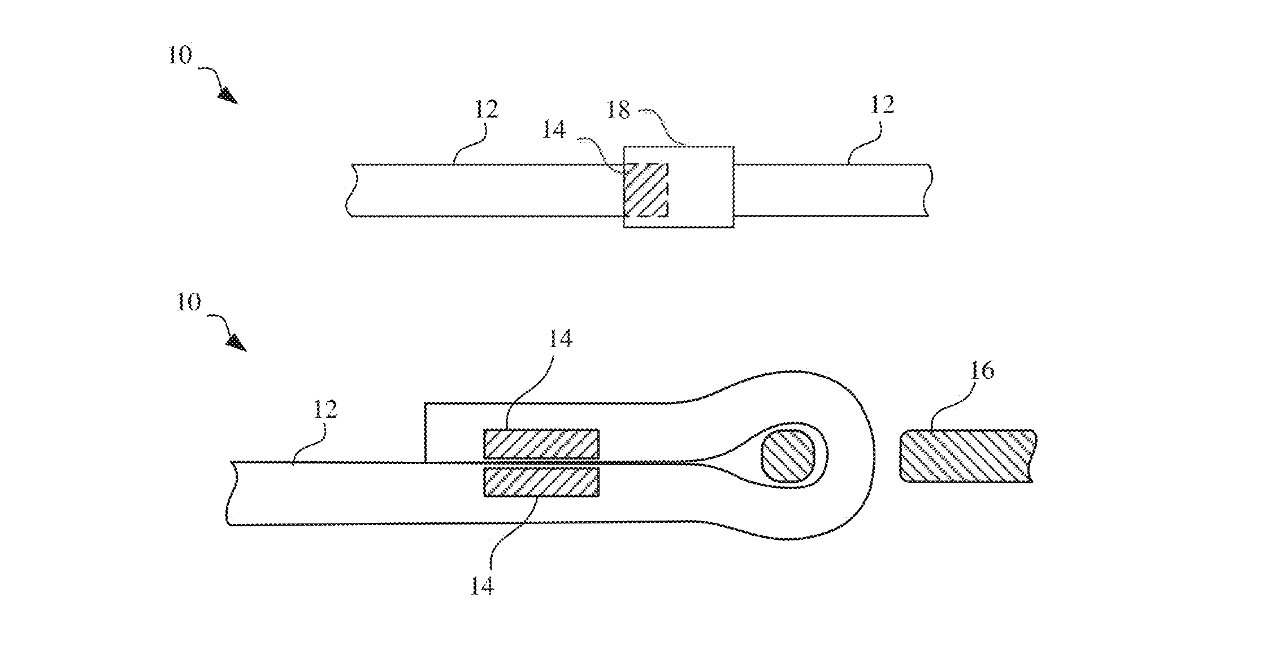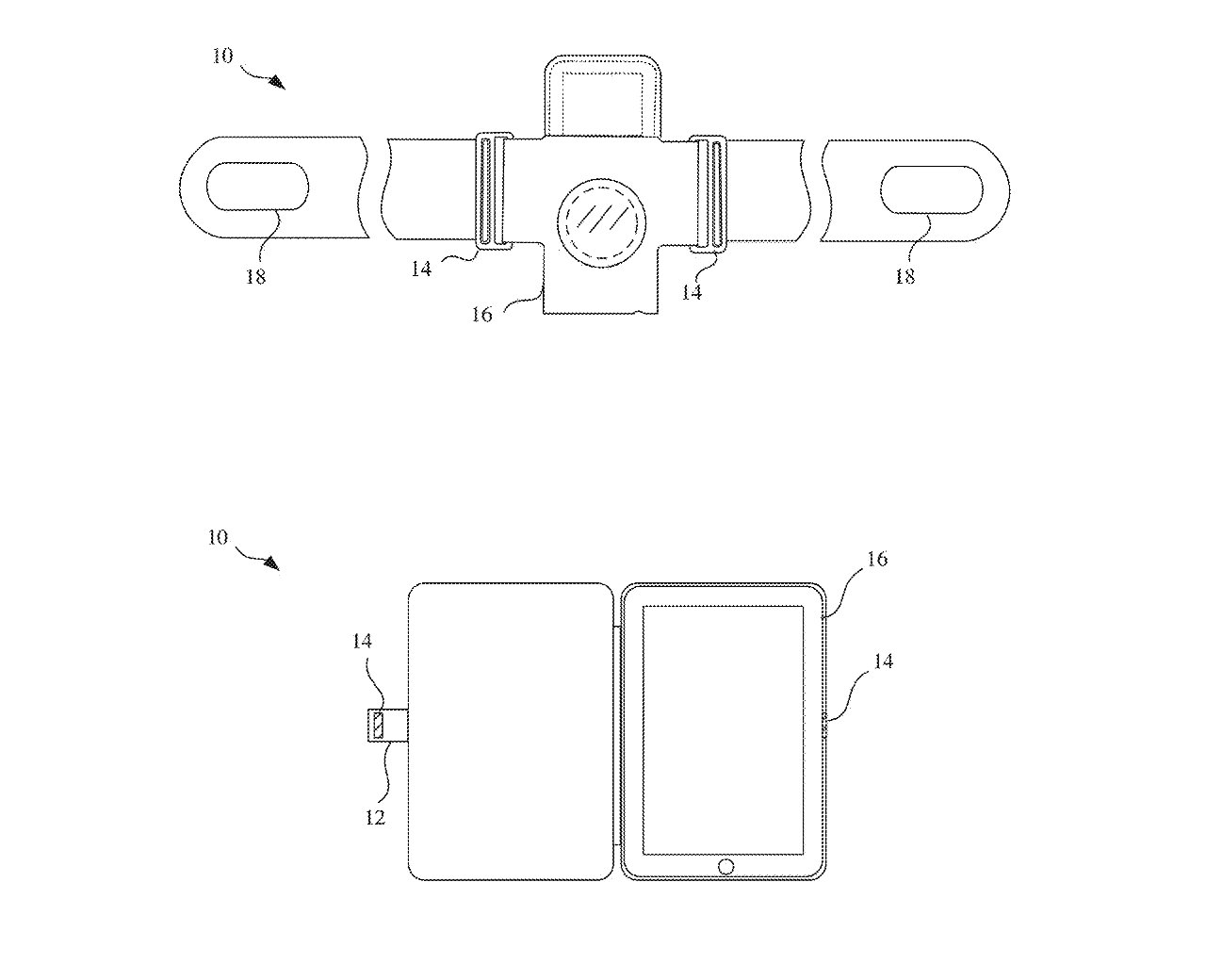Apple's interest in magnets is not confined to MagSafe. Instead, we're likely to see more magnetic clasps in the Apple Watch, or in cases for any Apple devices.
MagSafe is surely now the most well-known of Apple's use of magnets, but it isn't the only one — and it appears it's going to be joined by many more. Just as the Apple Watch Milanese loop depends on a magnet to fasten, so Apple has investigated magnetic clasps for cases, and other bands.
"Attachment Apparatuses and Associated Methods of Use and Manufacture," is a ">newly-revealed patent application which actually builds on a previous patent that was granted back in 2015. They are both concerned with ways of incorporating magnets into various materials, and how those can then secure devices.
The drawings in the patent application illustrate countless variations of different magnetic attachments, and shows them used on iPad cases. But the majority of the description concentrates on straps like Watch bands, or perhaps handles.
"Generally, straps or bands may be attached to a variety of items for use in carrying the items (e.g., hand strap or luggage strap), strapping them to another item or a person's body (e.g., arm band), or a plurality of other uses," says the patent application.
"However, conventional straps may require a mechanical connection to fixedly attach the strap to an item, and may not offer easy personal adjustments to length and other attributes," it continues. "Furthermore, the mechanical connections may be difficult to use making it difficult to remove or replace the strap."
Part of the patent is concerned with the look of magnetic systems, demonstrating how "at least one attachment point may be formed of a material configured to cosmetically match a cosmetic appearance of the device."
Otherwise, it's about how there have to be two magnets involved, and how having them together makes a "strapping assembly." When the second magnet is brought into contact with the first, such as by wrapping a strap around a user's wrist, it must be "configured to securely engage with the first" magnet.
The second magnet must then also be able to "releasably engage from the first attachment coupling of the first strap unit." In other words, you have to have a strap's magnets be strong enough that they won't break part without a deliberate, but not very great, effort.
This patent application includes around 50 drawings of different configurations of its proposed uses of magnets. Those that are not clearly Apple Watch bands, or iPad cases, are stretches of material that could reasonably be used on very many devices.
Most show connections where the two magnets are positioned atop each other, just as when a Milanese loop is closed. Some, though, illustrate interlocking parts that only use magnets for their final connection.
 Two of the very, very many drawings in the patent application show different ways of connecting magnets
Two of the very, very many drawings in the patent application show different ways of connecting magnetsConsequently, much of the patent application is about exactly how magnets are joined together. There are the interlocking ones where two parts of a device connect and are sealed by the magnets, or ones where two magnets are positioned side by side.
The latter could be used, for instance, for magnetically attaching a Magic Trackpad to the side of a Magic Keyboard.
This newly-revealed patent application is credited to four inventors, the same people who are on the original one granted in 2015. That includes Peter N. Russell-Clarke, whose previous related work includes Apple's research into an all-glass, wrap-around iPhone touch screen.
Stay on top of all Apple news right from your HomePod. Say, "Hey, Siri, play AppleInsider," and you'll get latest AppleInsider Podcast. Or ask your HomePod mini for "AppleInsider Daily" instead and you'll hear a fast update direct from our news team. And, if you're interested in Apple-centric home automation, say "Hey, Siri, play HomeKit Insider," and you'll be listening to our newest specialized podcast in moments.
 William Gallagher
William Gallagher





-xl-m.jpg)



 Malcolm Owen
Malcolm Owen

 Mike Wuerthele
Mike Wuerthele


 Thomas Sibilly
Thomas Sibilly
 Wesley Hilliard
Wesley Hilliard
 Marko Zivkovic
Marko Zivkovic








There are no Comments Here, Yet
Be "First!" to Reply on Our Forums ->